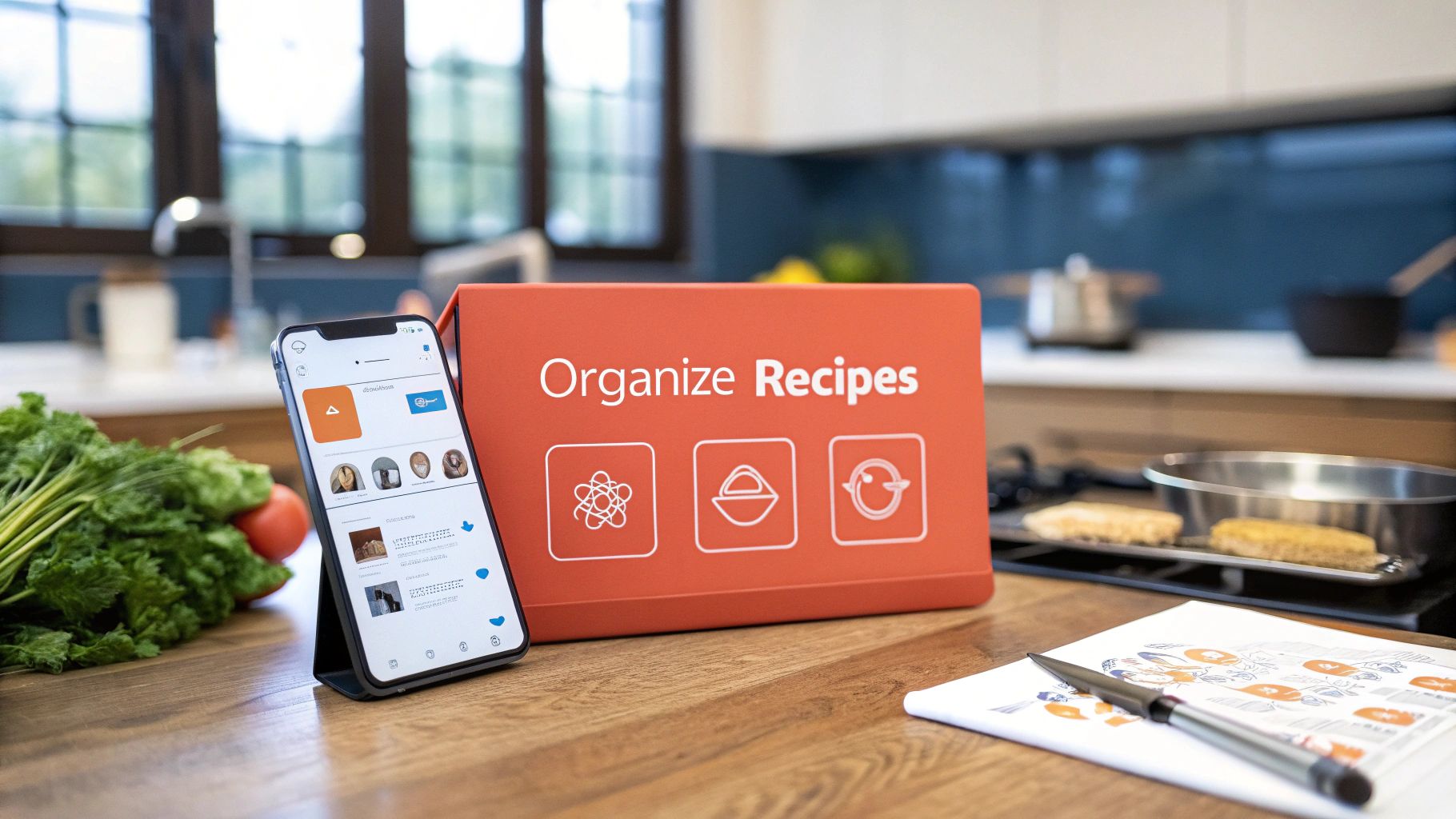The Digital Recipe Revolution Reshaping Home Cooking
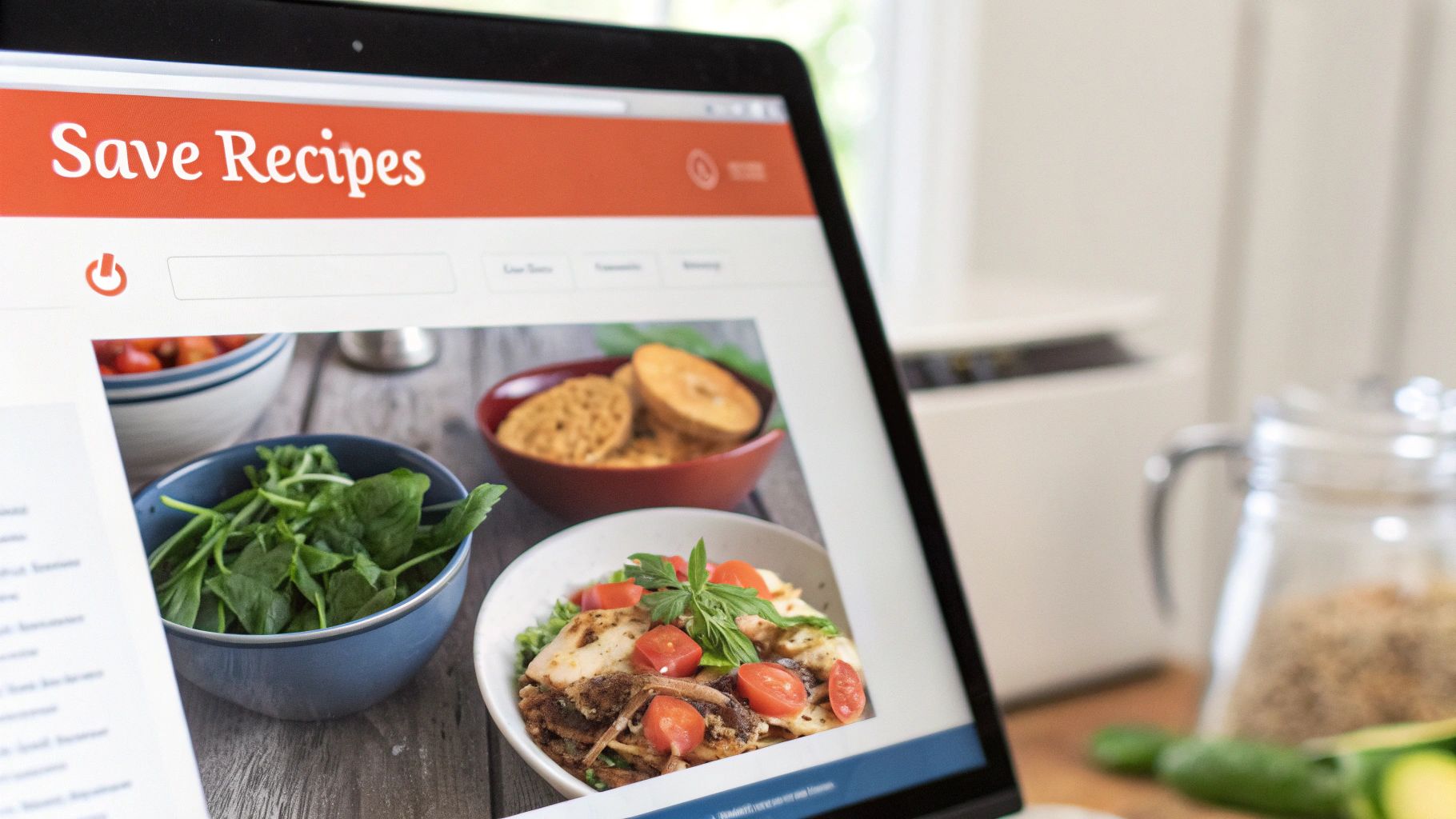
The way we interact with recipes has changed dramatically. We've moved from overflowing recipe boxes and stained cookbooks to a constant stream of digital content. Our culinary inspiration now comes from food blogs, social media feeds, and online cooking platforms. This digital shift has changed how we discover, save, and use recipes.
Why Traditional Methods Are Failing
Traditional recipe storage methods can't keep up with the sheer volume of online culinary content. A crammed recipe box or overflowing binder simply can't compete. Finding a specific recipe in a disorganized physical collection can be frustrating and time-consuming.
Digital organization, with its search and tagging capabilities, is a much more efficient approach. Imagine sifting through hundreds of printed recipes versus typing keywords into a search bar. The difference is stark. This has created a demand for personalized recipe management systems.
The Rise of Online Recipe Communities
The digital age has fostered vibrant online food communities. Social media platforms like Instagram, cooking forums, and recipe websites provide spaces for sharing culinary creations and exchanging tips. These communities have reshaped how we find and interact with recipes, moving beyond individual collections to a collaborative online space.
This collective approach expands our culinary horizons. It provides a continuous stream of inspiration and makes it easier to connect with fellow food enthusiasts. Discovering new recipes has never been simpler.
The Importance of Personalized Organization
The influx of digital recipes requires a new approach to organization. A personalized system is essential for managing your growing collection. This could involve dedicated recipe apps like Paprika, online bookmarking tools, or even a well-structured system within your cloud storage.
The digital recipe consumption market is booming. It's projected to grow from USD 625.91 million in 2024 to USD 1,706.30 million by 2031. This demonstrates a significant shift in consumer behavior. Find more detailed statistics here: Digital Recipe Consumption Market For effective meal planning, check out tips on how to start meal planning. Organizing your online recipes puts you in control of your culinary world, ensuring your favorite dishes are always accessible.
Battle-Tested Tools That Actually Organize Online Recipes
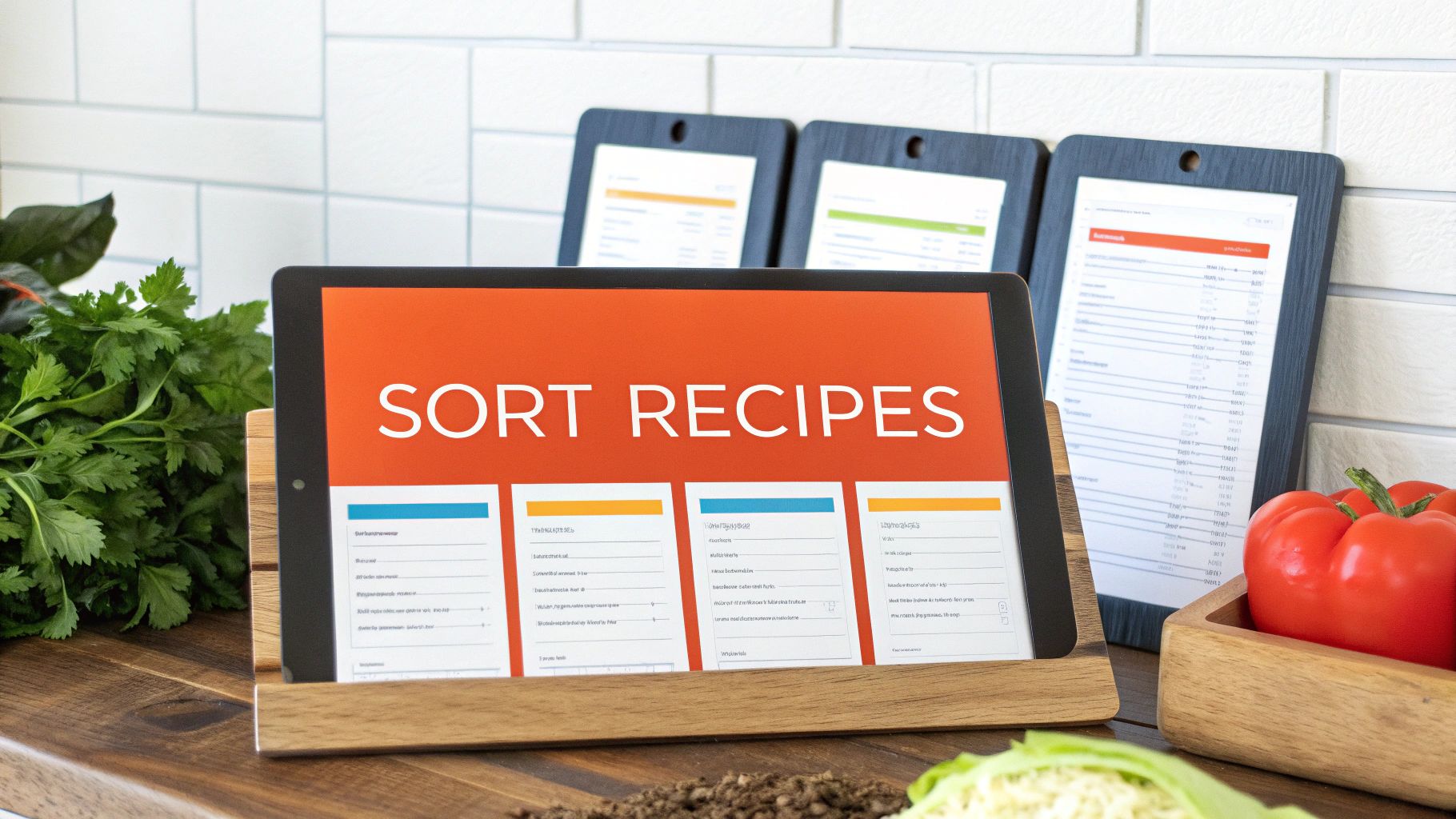
Tired of bookmarking recipes or relying on scattered screenshots? Dedicated recipe organizing tools offer a much better way to manage your culinary adventures. These platforms go beyond the basic functionality of generic note-taking apps, helping you conquer recipe overload. For more tips on recipe organization, check out this helpful resource: How to organize your recipes.
Key Features of Top Recipe Organizers
These specialized tools offer a variety of features designed with the modern home cook in mind.
-
Recipe Clipping: Forget manual copying and pasting! Easily import recipes from any website using browser extensions or by simply pasting the URL.
-
Ingredient Extraction: Save time and effort with automatic ingredient extraction. This feature makes creating shopping lists a breeze.
-
Customizable Categories and Tags: Organize your recipes in a way that makes sense to you. Use categories and tags based on cuisine, dietary restrictions, cooking time, or any other criteria.
-
Meal Planning Integration: Bridge the gap between inspiration and execution. Some platforms offer seamless meal planning integration, allowing you to easily drag and drop recipes into your weekly schedule.
-
Shopping List Generation: Simplify grocery shopping and avoid forgotten ingredients. Automatically generate shopping lists based on your planned meals.
Choosing The Right Tool For You
The ideal recipe organizer depends on your individual cooking style and organizational habits. Some cooks value a clean, minimalist interface, while others prefer more advanced features and integrations.
For instance, if you mainly use recipes from food blogs, robust web clipping is essential. If you're working with a large collection of family recipes, a platform with strong tagging and categorization features may be a better fit. Think about your recipe management priorities and choose a tool that addresses those needs.
To help you make an informed decision, we've compiled a comparison of some popular recipe organization apps.
This table highlights the key features, pricing, and platform availability of each app, along with user ratings to give you a sense of overall satisfaction.
Top Recipe Organization Apps Comparison:
| App Name | Key Features | Price | Platform Availability | User Rating |
|---|---|---|---|---|
| Paprika Recipe Manager 3 | Recipe clipping, meal planning, grocery lists, pantry tracking | $4.99 (one-time purchase) | iOS, Android, macOS, Windows | 4.8 stars |
| Mealime | Personalized meal planning, grocery lists, dietary preferences | Free (with premium features) | iOS, Android | 4.7 stars |
| Plan to Eat | Recipe import, meal planning, drag-and-drop interface, shopping list generation | $4.95/month or $39/year | Web, iOS, Android | 4.6 stars |
| BigOven | Recipe organization, meal planning, grocery lists, social sharing | Free (with premium features) | iOS, Android, Web | 4.5 stars |
| Whisk | Recipe saving, meal planning, shopping list creation, dietary tracking | Free | iOS, Android, Web | 4.4 stars |
As you can see, different apps cater to different needs. Paprika and Plan to Eat are great for those who want extensive recipe management features, while Mealime is ideal for personalized meal planning. Consider your budget and preferred platforms when making your choice.
The Growing Recipe App Market
The increasing demand for efficient recipe management is driving significant growth in the recipe app market. This market, influenced by trends like home cooking and a growing focus on healthy eating, was valued at $1.25 billion in 2024. Projections indicate it will reach $1.41 billion in 2025, reflecting a CAGR of 13.5%. You can delve deeper into this trend with the Recipe App Market Report. This expansion highlights our increasing dependence on digital tools for managing our culinary lives. This is fueled by the popularity of food-related content on social media and advancements in mobile app technology. With the sheer volume of online recipes available, a dedicated organization system is becoming a necessity.
Building Your Personalized Recipe Organization System
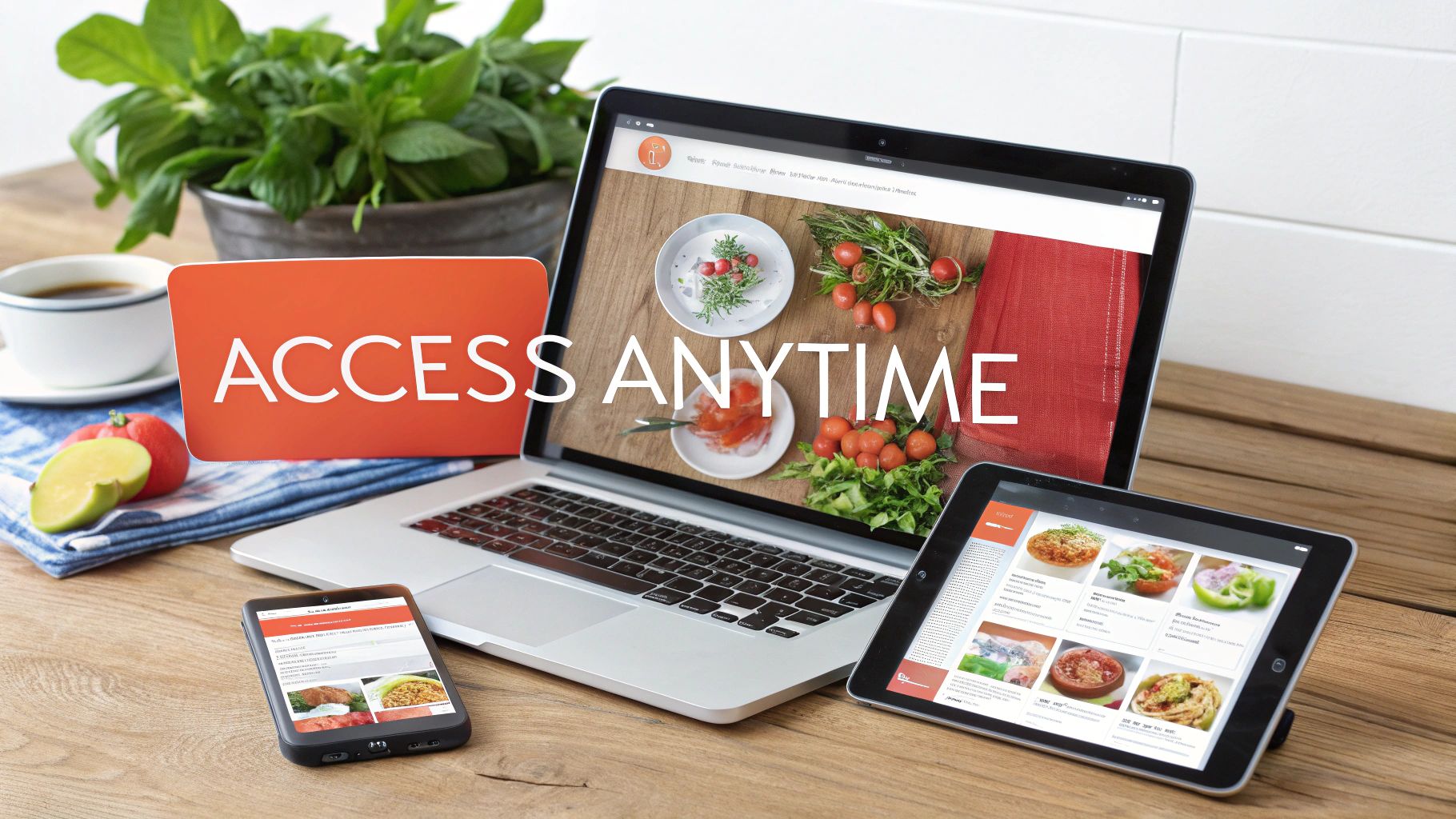
Stop letting random bookmarks and screenshots control your cooking. A well-organized online recipe system can simplify your time in the kitchen. This section will help you build a recipe library that works for you and changes as your cooking skills grow.
Establishing Your Recipe Taxonomy
The first step is creating a recipe taxonomy. This is simply a way to classify and categorize your recipes. Think of it as your own personal filing system for your digital recipes. For some helpful tips, check out this article on how to master digital recipe organization.
Some people like to organize by cuisine (Italian, Mexican, etc.), while others prefer organizing by meal types (breakfast, dinner, desserts). You could also organize by dietary needs (vegetarian, gluten-free), cooking methods (grilling, baking), or even by key ingredients. The most important thing is to choose a system that fits your cooking style and helps you find what you need quickly.
Creating Custom Categories
Many online recipe platforms offer default categories. However, don't be afraid to create your own! Pre-made categories might not work for how you actually cook. You can also create subcategories within larger categories for a more detailed system.
For example, inside the category "Dinner," you could have subcategories like "Weeknight Meals," "Special Occasions," or "Slow Cooker Recipes." This layered system is very adaptable and lets your organization grow along with your recipe collection. This means less searching and more cooking!
Practical Workflows for New Recipes
Having a regular process for adding new recipes helps prevent digital clutter. When you find a new recipe you want to keep, take a few seconds to categorize and tag it right away. This keeps you from having a pile of unorganized recipes later.
Consider adding tags for key ingredients, cooking time, or difficulty level. These tags make searching easier later, even if you can't remember the recipe's name. This is especially helpful if you have a lot of recipes or are short on time.
Examples of Organizational Approaches
Different cooking styles work best with different organization methods. Someone who cooks quick weeknight meals might prioritize recipes with short cooking times and easy-to-find ingredients. They might use categories like "30-Minute Meals" or "One-Pot Wonders."
Someone who likes to experiment in the kitchen on weekends might organize by cuisine or specific techniques. They might have categories like "French Pastries" or "Sous Vide Cooking." These examples show how a personalized approach can make finding recipes easy and enjoyable. This makes cooking less stressful and more fun, no matter your cooking goals.
Maximizing Popular Recipe Platforms for Organization
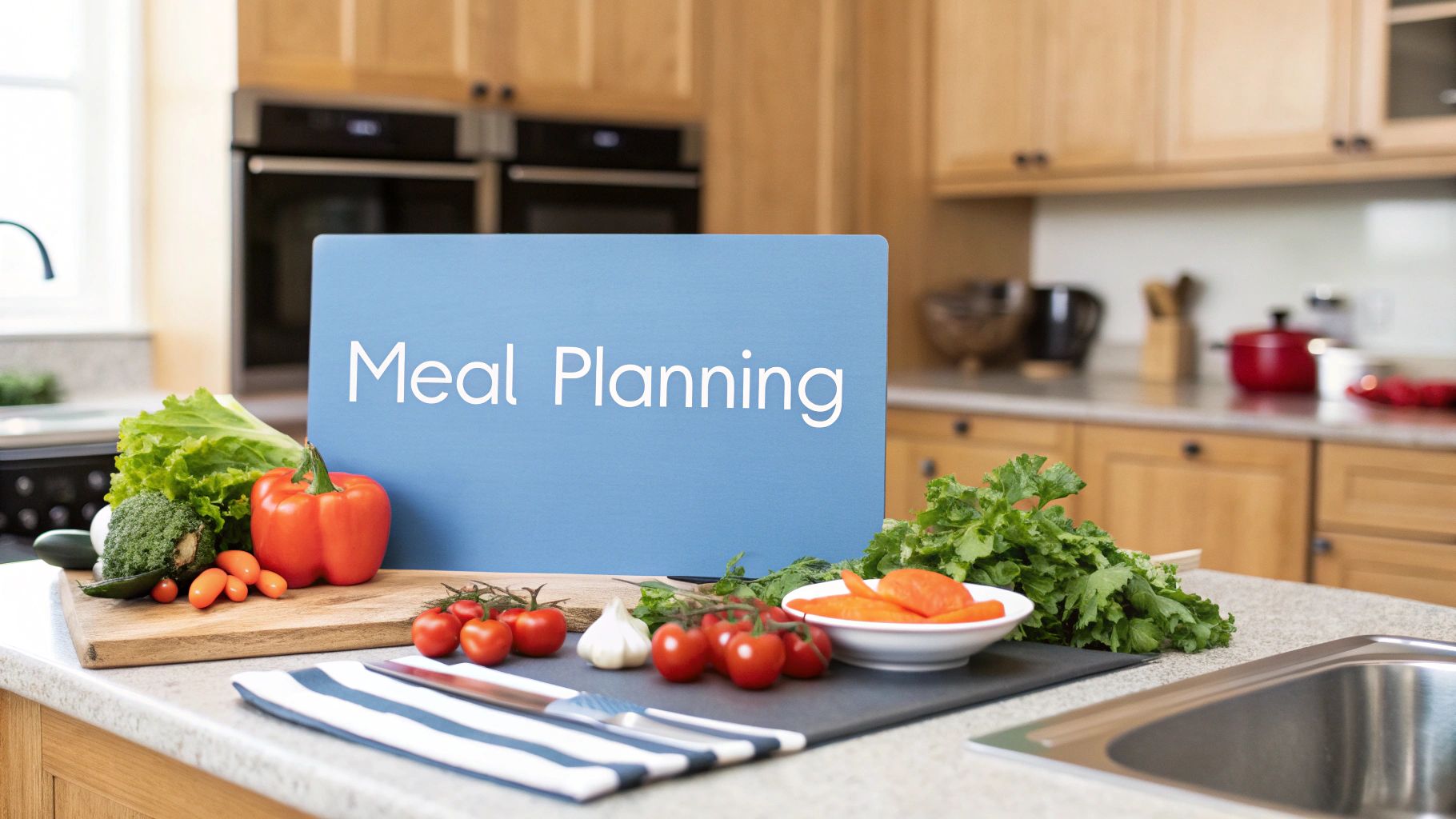
While dedicated recipe apps offer powerful organizational tools, many popular recipe websites have hidden gems just waiting to be discovered. These often-overlooked features can significantly improve how you save and access your recipes online. This means less toggling between apps and a more enjoyable cooking process.
Unlocking Hidden Features on Epicurious, NYT Cooking, and Allrecipes
Sites like Epicurious, NYT Cooking, and Allrecipes offer more than just recipe browsing. They provide robust tools for saving and organizing your culinary treasures. For example, you can create personalized collections, tag recipes with specific keywords, and even rate dishes based on your experience. These built-in tools offer a convenient way to manage your online recipes without needing external apps.
Many platforms also offer advanced search filters. These filters let you narrow your search by ingredient, cuisine, dietary restriction, and more. This is incredibly helpful when searching for a specific recipe whose name escapes you. This targeted searching can save you valuable time and effort.
Creating a Cross-Platform System
Many cooks find their favorite recipes spread across multiple websites. Creating a cross-platform system can truly change the game. One effective approach is to maintain a consistent tagging system across all platforms. For example, you could tag recipes with "weeknight," "vegetarian," or "quick" regardless of the website. This standardized approach simplifies searching and filtering your entire recipe collection, no matter where the recipe is stored.
Another useful technique is using a central spreadsheet or document to track your favorite recipes from different sites. This document could include the recipe name, the website URL, and your personalized tags. This creates a master list, linking to all your favorite recipes across the web.
Evaluating Recipe Quality Before Saving
Not all online recipes are created equal. Experienced cooks understand the importance of evaluating recipe quality before hitting the save button. Look for recipes with clear instructions, accurate ingredient lists, and helpful user reviews. A recipe with positive feedback and helpful tips from fellow cooks is much more likely to be a success. This careful selection process ensures your recipe collection is filled with dependable and delicious options.
The global recipe website market is projected to reach USD 10.5 billion by 2033, highlighting the increasing role of online platforms in our culinary lives. You can learn more about this growing market here: Recipe Website Market Growth. With this expanding digital landscape, efficient organization is more important than ever.
Backing Up Your Recipe Collection
Websites can vanish or change their features unexpectedly. Backing up your recipe collection is crucial. Many platforms offer export features, allowing you to download your saved recipes. You can also take screenshots of your favorite recipes for extra security. This proactive approach safeguards your treasured recipes, even if a website goes offline or undergoes structural changes. This gives you peace of mind, knowing you can continue enjoying your favorite dishes for years to come.
How AI Is Transforming Recipe Organization Forever
Artificial intelligence is changing how we manage our recipes. We're going beyond basic organization and moving toward AI systems that anticipate our needs. These new tools automatically categorize recipes, build shopping lists, and even recommend meals based on what's already in your pantry. This shift signifies a fundamental change in how we interact with our recipes.
AI-Powered Features: From Hype to Reality
Some AI features offer real value, while others aren't quite as helpful. Automatic categorization is one area where AI excels. Imagine adding a new recipe, and the system automatically tags it as "vegetarian," "Italian," and "30-minute meal." This automation saves you significant time and effort.
Another useful feature is AI-powered shopping list generation. The system analyzes your meal plans and compiles a consolidated grocery list. Some more advanced tools even factor in your pantry inventory, recommending what you need to buy and highlighting what you already have.
However, personalized recipe recommendations still have room for improvement. AI can analyze your past cooking, but it can't yet understand subtle preferences like specific flavor profiles or mood-based cravings. So while AI can make suggestions, it might not always offer the perfect recipe.
The Benefits for Home Cooks
Those already using AI-powered recipe tools report significant time savings. Some claim to have reduced recipe processing time by 70%. This is a major benefit for busy people who enjoy cooking but lack the time for extensive meal planning.
Besides saving time, AI organization can also enhance your cooking experience. By automatically categorizing and tagging recipes, AI makes finding what you need much simpler. This reduces decision fatigue and makes browsing your recipe collection more enjoyable. Recipe apps and websites have become central to home cooking. The global recipe apps market was valued at USD 5.80 billion in 2024 and is projected to reach USD 14.27 billion by 2033. Learn more about this growing market: Recipe Apps Market Growth.
Integrating AI Into Your Existing System
Integrating AI into your recipe management doesn't require a complete system change. Many AI tools integrate with existing platforms, making it simple to improve your current setup. You can explore the AI features in your current recipe app or try a dedicated AI-powered recipe organizer.
It's important to consider data privacy when using AI tools. Select reliable platforms with clear privacy policies that outline how your recipe data is handled. This allows you to enjoy the benefits of AI while staying in control of your personal information. This approach helps you embrace the future of recipe organization with confidence.
Turning Organized Recipes Into Stress-Free Meal Plans
The true measure of a well-organized recipe system is how easily it translates into meals on your table. This section provides a practical approach for creating weekly meal plans using your newly organized online recipes. You'll learn how experienced home cooks develop balanced meal rotations, factoring in seasonality, budget, and skill level. This organized approach eliminates the daily "what's for dinner?" dilemma.
Building Balanced Meal Rotations
Successful meal planning starts with a balanced approach. Think about incorporating a variety of cuisines, cooking methods, and nutritional profiles throughout the week. For example, you might dedicate one night to Italian, another to Asian-inspired dishes, and another to comforting classics. This keeps your meals interesting and ensures you get a range of nutrients.
Consider your schedule and skill level when planning. If you have limited weeknight time, prioritize quick and easy recipes. You might be interested in: How to master meal prepping. Save more complex or time-consuming recipes for weekends when you have more flexibility. This realistic approach sets you up for success.
Seasonality also plays a key role in enjoyable meal planning. Utilize fresh, in-season produce for maximum flavor and nutritional value. This not only enhances the taste of your dishes but can also save you money. Building your meal plans around seasonal ingredients adds a touch of excitement and keeps your cooking fresh.
Streamlining Grocery List Generation
Once you’ve established your meal plan, generating a grocery list is the next step. A well-organized recipe system simplifies this task significantly. Many online recipe organizers offer automatic grocery list features. These tools analyze your selected recipes and compile a consolidated list of ingredients. This eliminates the need for manual list-making and reduces the chance of forgetting an item.
Even without automatic tools, a well-structured recipe system makes grocery list creation much easier. Because your recipes are categorized and tagged, you can quickly locate the ingredients you need. This organized method reduces shopping time and can help prevent food waste by ensuring you only buy what you’ll use.
Maximizing Time in the Kitchen
Effective meal planning goes beyond simply deciding what to eat. It also involves strategic preparation and cooking to maximize your time in the kitchen. Batch cooking is one popular technique. Prepare large quantities of staples like grains, beans, or roasted vegetables on the weekend to use in meals throughout the week. This saves valuable time on busy weeknights.
Another strategy is ingredient prep. Wash, chop, and portion ingredients ahead of time, so they’re ready to go when you start cooking. This streamlines the cooking process and makes it less daunting to tackle weeknight meals.
Maintaining Variety and Leveraging Your Recipe Collection
As your recipe collection grows, maintaining variety becomes essential. Avoid falling into a recipe rut by intentionally rotating through your saved dishes. Many online recipe organizers have features that track how often you’ve made a recipe. This helps you avoid repetition and encourages you to explore new flavors.
Leverage your growing recipe collection by creating themed meal plans. For example, you could have a "Meatless Monday" theme or a "Taco Tuesday" tradition. These themes create structure and make it easier to decide what to cook each week.
This table outlines how different cooking styles can be served by different organization methods:
Recipe Organization Methods by Cooking Style
Recommended organization approaches based on different cooking preferences and habits
| Cooking Style | Recommended Organization Method | Key Benefits | Potential Drawbacks |
|---|---|---|---|
| Weeknight Warrior (quick & easy) | Organize by cooking time, "one-pot" or "30-minute meals" | Fast recipe retrieval, simplifies weeknight cooking | Can limit culinary exploration |
| Weekend Experimenter (complex dishes) | Organize by cuisine, technique (e.g., "sous vide," "baking") | Encourages experimentation, expands skillset | Can be time-consuming to search if not meticulously tagged |
| Health-Conscious Cook (dietary needs) | Organize by dietary restriction (e.g., "vegan," "gluten-free") | Easily finds suitable recipes, simplifies dietary management | Requires consistent and accurate tagging |
| Budget-Minded Cook (cost-effective) | Organize by main ingredient (e.g., "chicken," "beans") | Facilitates using pantry staples, reduces food waste | May require additional effort to balance nutritional variety |
The table clearly shows how organizing your recipes can cater to various cooking styles and preferences, making meal planning more efficient and enjoyable.
By turning your organized recipes into efficient meal plans, you’ll find that cooking becomes less stressful and more enjoyable. With a structured approach, you can savor the pleasure of creating delicious meals without the daily scramble of figuring out what to make.
Ready to transform your digital recipe collection into a personalized cookbook? Recify helps you easily save and organize recipes from any online source. Try Recify today!
